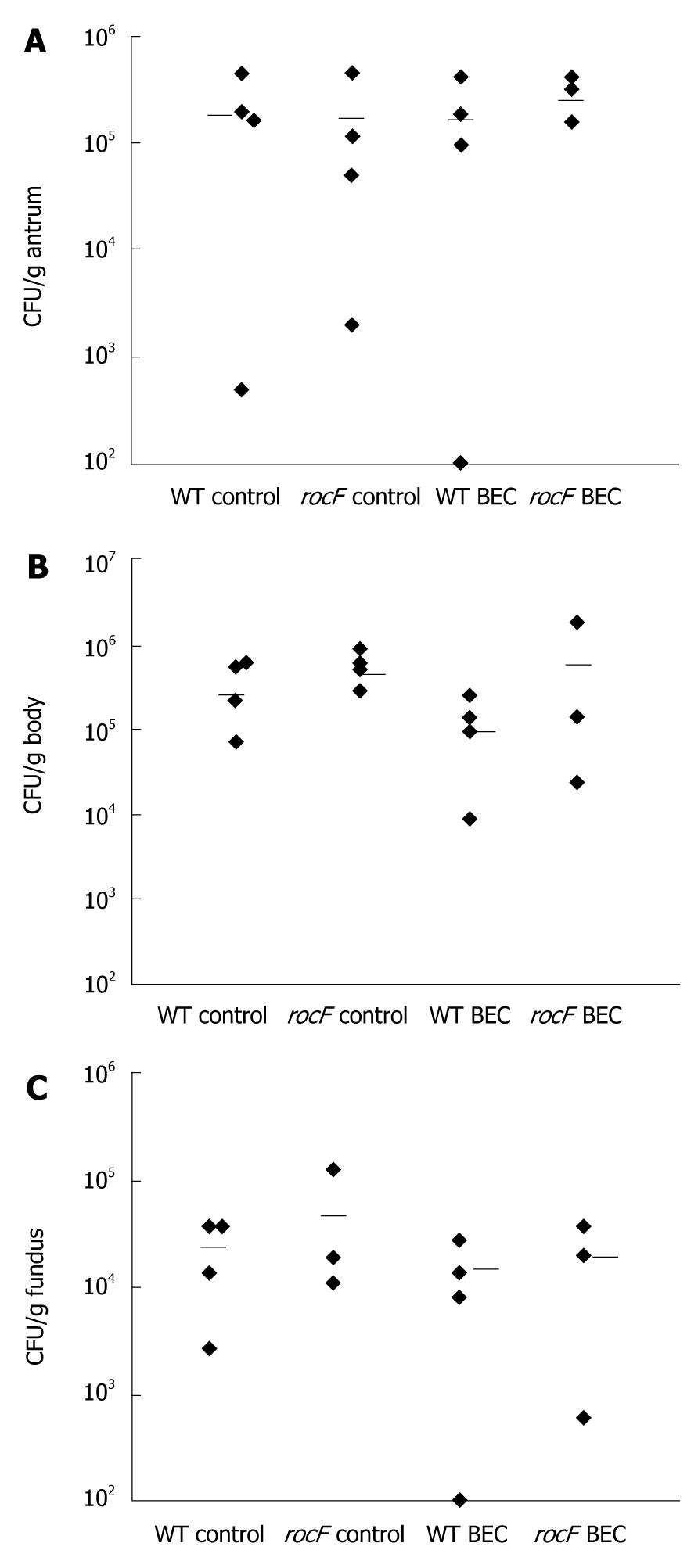Copyright
©2011 Baishideng Publishing Group Co.
World J Gastroenterol. Jul 28, 2011; 17(28): 3300-3309
Published online Jul 28, 2011. doi: 10.3748/wjg.v17.i28.3300
Published online Jul 28, 2011. doi: 10.3748/wjg.v17.i28.3300
Figure 7 The rocF mutant of Helicobacter pylori colonizes wild-type mice treated with the arginase inhibitor S-(2-boronoethyl)-L-cysteine.
Wild-type (C57 BL/6) mice (n = 3 or 4 per group) were orally fed water or S-(2-boronoethyl)-L-cysteine (BEC) (50 mmol/L) once or twice daily for 3 d before oral inoculation with wild-type or rocF mutant Helicobacter pylori (H. pylori) strain SS1 (~108 CFU). The BEC animal groups continued to receive BEC daily until animals were euthanized. At 1 wk post-infection, animals were euthanized and the stomach dissected into antrum (A), body (B), or fundus (C). Limit of detection was ~100 CFU/g stomach and all animals that lacked H. pylori were set to this detection limit. Bar, mean CFU/g tissue. Usually each symbol represents one mouse. In some cases there are two mice represented by a symbol if the data overlapped.
-
Citation: Kim SH, Langford ML, Boucher JL, Testerman TL, McGee DJ.
Helicobacter pylori arginase mutant colonizes arginase II knockout mice. World J Gastroenterol 2011; 17(28): 3300-3309 - URL: https://www.wjgnet.com/1007-9327/full/v17/i28/3300.htm
- DOI: https://dx.doi.org/10.3748/wjg.v17.i28.3300









